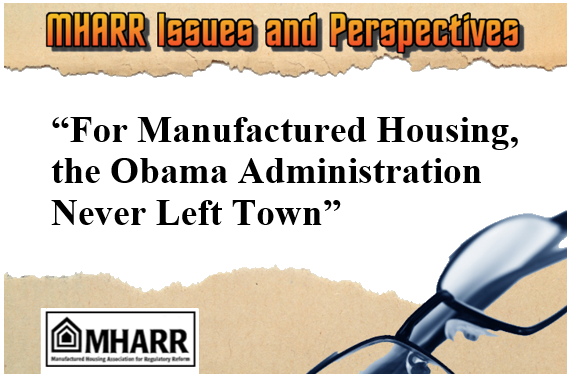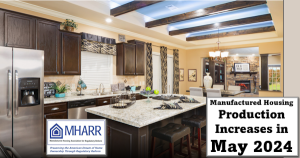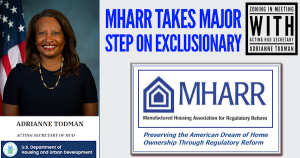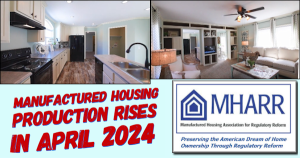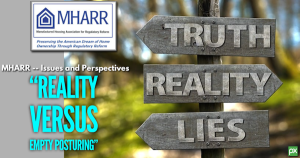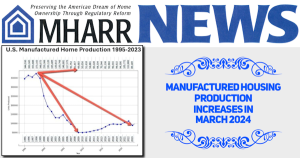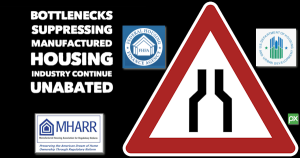[vc_row][vc_column][vc_column_text]Recognizing that excessive government regulation plays a major role in stifling economic growth while inflicting disproportionate harm on the multitude of small businesses that are the engine of job creation within the American economy, President Trump came to office in January 2017 on a platform of “deconstructing the administrative [i.e., regulatory] state.”
Consistent with this pledge, the Trump Administration, in rapid succession, took specific actions designed to slow, halt and, eventually, reverse the growth of the federal regulatory monster. Among other things, the new Administration: (1) imposed a “regulatory freeze” order on January 20, 2017, requiring that any new “regulatory action” by a federal Executive Branch agency be approved by an agency head or designee appointed by President Trump; (2) issued Executive Order (EO) 13771 on January 30, 2017, requiring, among other things, that any federal agency proposing a new regulation for notice and comment “identify at least two existing regulations to be repealed;” and, most significantly, (3) issued EO 13777 on February 24, 2017, stating “It is the policy of the United States to alleviate unnecessary regulatory burdens placed on the American people,” while establishing a process for agency review, modification, and/or repeal of existing regulations that “eliminate jobs or inhibit job creation, are outdated, unnecessary, or ineffective, or impose costs that exceed benefits.”
So, what impact – if any – have these policies had on federal regulatory activity thus far? A study published on August 8, 2017 by the American Action Forum (AAF), a Washington, D.C. government watchdog organization, tells the story. Over the first six months of the Trump Administration, AAF found that “new regulatory burdens are a fraction of those established under President Obama’s first six months,” while “overall regulatory volume has slowed to historically low levels.” (Emphasis added). More specifically, the AAF data shows that “compared to the [first six months of the] Obama Administration, the Trump Administration has imposed: 1/20th of the lifetime costs, 1/11th of the annual costs, and 1/8th of the paperwork.” This translates into “nearly 6 million fewer paperwork burden hours [and a] workload savings of roughly 3,000 full-time employees.” Thus, according to AAF, “both the volume and impact of new regulatory burdens have slowed dramatically.” (Emphasis added). Combined with 3% growth in Gross Domestic Product (GDP) over the second quarter of 2017 (the first full economic quarter of the Trump Administration), this represents outstanding news for the nation’s economy and many, if not most, regulated American businesses.
But that is where the good news ends, at least for the manufactured housing industry and its consumers, because the regulatory reform agenda of the Trump Administration appears, so far, to have eluded the federal manufactured housing program which, under its Obama Administration holdover-Administrator, continues to operate and function — and churn out costly new regulatory mandates — like the Obama Administration never left town. And the industry, sadly, has no one to blame but itself, as the traditional “go-along-to-get-along” mentality of some seems not to have changed one bit to adjust to the new reality of the Trump Administration’s regulatory reform agenda.
Two metrics objectively establish this regulatory reform disconnect. First, compare the regulatory activity of the HUD manufactured housing program with the government-wide assessment of regulatory activity conducted by AAF. While government-wide regulatory activity under the Trump Administration has reached historically-low levels, regulatory activity within the HUD manufactured housing program, over the past six months, has not slowed at all and, if anything, appears to have intensified, with the program in the process of pursuing multiple new regulatory mandates that would significantly and unnecessarily increase consumer costs and industry regulatory burdens.
These include, but are not limited to: (1) an impending proposed rule to establish multiple new manufactured housing standards as announced in the latest federal Semi-Annual Regulatory Agenda (SRA); (2) the pending Interpretive Bulletin (IB) for “frost-free” foundations (IB I-1-17), which, in fact, constitutes a substantive change to the existing HUD standard with no cost or needs analysis in violation of the Manufactured Housing Improvement Act of 2000; (3) the pending effort to dictate installation standards in all 50 states that will add needless costs while undermining the federal-state partnership at the heart of federal manufactured housing law; (4) the continuing expansion of Subpart I requirements, including “at least monthly” service record reviews; (5) intensified, expanded and costly (yet unnecessary) in-plant regulation, which was established unlawfully to begin with; and (6) multiple other actions under the guise of interpretations and “guidance” (involving, among other things, designs to accommodate attached garages and carports), without adherence to statutory safeguards, among other things.
Second, compare the pace of regulatory activity within the federal manufactured housing program to the pace of regulatory activity within HUD as a Department – again, over the first half of 2017. The HUD SRA published in late-August 2017 shows only one proposed rule in process for the entire agency – that being a proposed rule for new manufactured housing standards, targeted for publication in September 2017, to “add new standards that would establish requirements for carbon monoxide detection, stairways, fire safety considerations for attached garages, and draftstops when there is a usable space above and below the concealed space of a floor/ceiling assembly.” (Emphasis added). In addition, the impending proposed rule, according to HUD, “would establish requirements for venting systems to ensure that proper separation is maintained between the air intake and exhaust systems.”
Thus, while rulemaking activity and the imposition of new regulatory burdens is down substantially at other federal agencies – and even at HUD — as shown by the August SRA, the manufactured housing program, under its holdover administrator, continues to cruise along with new, expanded and intensified regulation like it’s the height of the Obama administration – because within the HUD program, it is.
Simply put, the HUD manufactured housing program continues to regulate like the Obama administration is still in power, because the program continues to be run by an Obama administration holdover, with a regulatory outlook consistent with that of the former president, not President Trump. Thus, it should be no surprise that in open defiance of the new administration, the program has moved forward with multiple regulatory actions that, at a minimum, should have been – and should have remained – “frozen” under the president’s order of January 20, 2017 and should never have even seen the light of day under an Administration dedicated to “alleviat[ing] unnecessary regulatory burdens … on the American people.”
Even worse, where regulatory changes could actually help the industry to be more competitive with other types of housing – particularly lower-priced site-built homes – and help provide American consumers with more affordable housing options and choices, change has not been forthcoming. The most notable example of this phenomenon is the recommendation of the Manufactured Housing Consensus Committee (MHCC) to amend the federal manufactured housing standards so as to permit multi-family manufactured homes (and simultaneously overturn a ruling of the current administrator against home designs that could facilitate multi-family use) which has languished since 2015. Such a change would not only help consumers, but would allow the industry to expand its market and production numbers that continue to hover well-below its vast and unlimited potential. This is just one illustration of how the industry and its consumers have gotten the worst of all worlds under the current administrator.
So, who benefits from all this and why does it continue unabated, at least for now? The beneficiaries are easy to identify. They include industry competitors, who understand all too well the price and market advantages that manufactured housing, unshackled from excessive and unnecessary federal regulation, could bring to the table. They include entrenched program contractors (one under a de facto 40-year sole source contract – unheard-of, even by Washington, D.C. standards), which never miss on opportunity – in conjunction with HUD regulators – to create and generate new make-work functions and new billings, leading to ever-increasing revenue, and they include the industry’s largest businesses (now edging into the site-built market), which skillfully manage, to their advantage, a regulatory playing field that disproportionately harms and disadvantages smaller competitors which are forced to distribute regulatory compliance costs over a smaller production base.
As for why the unacceptable status quo continues, part of the problem is the slow pace of nominations and confirmations of HUD officials below the Secretary level – which is beyond the industry’s control. Just as significant, though, if not more so, has been the failure of part of the industry itself – the same part that paved the way for the installation of the current administrator to begin with – to join MHARR and others in the industry in publicly and forcefully demanding the administrator’s re-assignment and replacement with a qualified appointee. Muddying the proverbial waters with misinformation, misguided policies and “feel-good” initiatives (at a time when Trump Administration regulatory reform policies are already in place), will simply not get the job done, insofar as the root of the continuing problems within the program – i.e., the current program administrator — remains.
With industry production continuing at levels below 100,000 homes per year and with consumers ultimately forced to pay for unnecessary regulatory mandates and contractor make-work, the leadership of the program must change to one that will comply-with and embrace the regulatory reform agenda of President Trump in order for the industry to advance and grow to its full potential. Indeed, there will be no change for the better for the industry and its consumers, unless and until a new and fully-accountable appointed administrator takes control of the program and institutes thorough reforms including, most especially, a top-to-bottom reform of the program contracting process which has been a key element of the baseless over-regulation of the industry for decades.
Mark Weiss
MHARR is a Washington, D.C.-based national trade association representing the views and interests of independent producers of federally-regulated manufactured housing.
“MHARR-Issues and Perspectives” is available for re-publication in full (i.e., without alteration or substantive modification) without further permission and with proper attribution to MHARR. [/vc_column_text][/vc_column][/vc_row]

